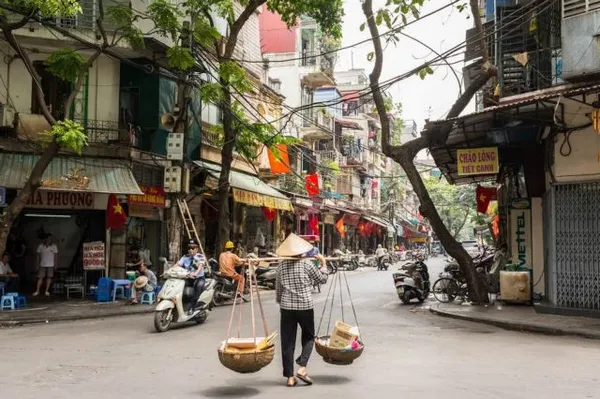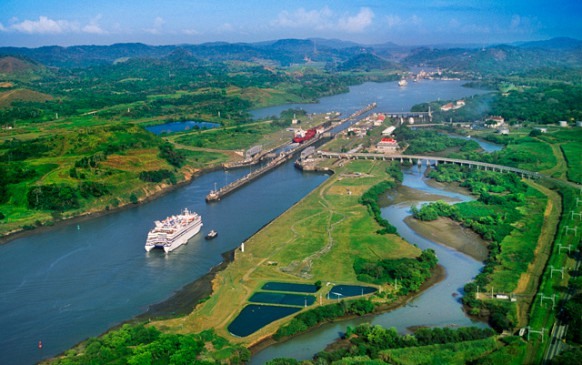 Expat Corner
Expat Corner

Panama is building on its logistical strengths to facilitate global commerce and sustain its impressive growth, Ambassador Servio Samudio says in a message on the 113th National Day of The Republic of Panama today (November 3).
 |
| In the photo the “Puente Centenario”. (Centennial Bridge) & the transit of a vessel through the Panama Canal. — Photo courtesy of Panama Embassy |
Panama is building on its logistical strengths to facilitate global commerce and sustain its impressive growth, Ambassador Servio Samudio says in a message on the 113th National Day of The Republic of Panama today (November 3).
Since its opening in 1914, the Panama Canal across the Isthmus of Panama grew in importance, revitalising it as a country of transit and trade. The Panama Canal connects the world, shortens distances, time and transportation costs between the production and the consumption centers, and is the dynamic hub of logistics assets in the country.
The waterway is synonym for connectivity, as reflected by the 144 sea routes that cross the Canal, reaching 1,700 ports in 160 countries. Accounting for 2.3 per cent of the world maritime trade, Panama occupies a vital position in global commerce.
The Panama Canal Authority contributed to the National Treasury the sum of US$ 1,030 million for the 2014 fiscal year, or 6.6% higher than budgeted. From the year 2000, it has directly contributed the amount of US$ 9,600 million.
The economic growth experienced in the last decade will be reinforced with the mega project to expand the Panama Canal, which began in 2007 and was inaugurated last June. The project investment was US$5,300 million, about 10-15 per cent of current GDP.
With the canal expansion, the country’s importance as a main hub for international trade has been enforced, as has its role as a strategic partner of countries that use this route. For more than a century, the Canal has offered its services to the international maritime industry, promoting Panama’s growth, development and progress. Today, the Panama Canal Authority is pushing boundaries and facilitating growth for Panama in particular and for Latin America and the world in general.
 |
| The Panama Canal is an artificial 48-mile waterway in Panama that connects the Atlantic Ocean with the Pacific Ocean. — Photo courtesy of Panama’s Embassy |
The Government of Panama also invests in potential sectors that are drivers for growth and development of the national economy. The approach is to enable logistics values.
Air connectivity: Tocumen International Airport, a regional hub, connects Panama to the Caribbean, North, Central and South America via national carrier Copa Airlines Panama.
Fiber optic connectivity: Panama is an ideal location for telecommunications companies and data centers connected with North America, South America, Europe, Asia and the Caribbean. This is evidenced by the large presence of mobile telecommunication companies and internet services at the domestic and international level. This logistics framework with added value will maintain more than 47,000 jobs in industries related to logistics by the year 2020.
Panama has a wide network of maritime ports - Port of Balboa, Cristobal, Manzanillo International Terminal and the Port of Singapore Authority (PSA) - that provides a variety of cargo and passenger services. The Asian group PSA is present in thirty terminals in the world, with flagship operations in Singapore and Antwerp. In 2014 PSA mobilised 65 millions TEUs. PSA has increased its capacity in Rodman, Panama city, investing US$400 million in two piers and the installation of eight additional gantry cranes, to up its capacity by 2 million TEUs, almost half the capacity of the Port of Balboa, which can mobilize up to 5 million TEU’s. Eleven PSA cranes will be added to this, and with the Port of Balboa having 25, the two ports will have a total of 36 cranes.
The international ports connected through the Panama Canal make up a global network, made possible because of the waterway and ports infrastructure.
Panama is also a unique place in the world, where it is possible to move containers through land from Atlantic to Pacific Ocean in less than four hours.
Built in 1855, the Panama Canal Railroad was the most expensive railroad ever made (cost per mile). During the first 12 years of its operations, the Panama Railroad carried over US$750,000,000 in gold dust, nuggets, and gold and silver coin.
The Panama Railroad provides an efficient transshipment service between Atlantic and Pacific ports. It complements existing transportation infrastructure provided by the Canal, moving containers from port to port without touching the tax territory, its handling capacity is around 500,000 TEUS a year. Basically it is a Free Zone on rails.
The Panama Canal would have been impossible to build without the Panama Railroad. The Colon Free Zone located in Colon Province on the Atlantic coast is the most important free trade zone in the western hemisphere, operating since 1948. It is also the second largest free trade zone in the world after Hong Kong.— VNS









